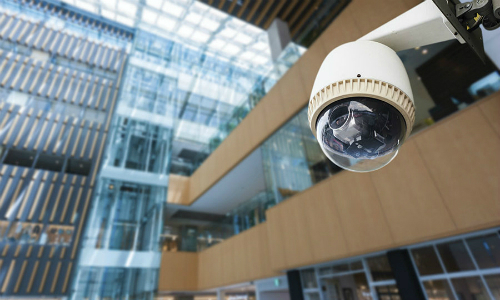How AI-Enabled Video Analytics Is Getting SaaS-y
Agent Vi Founder Zvika Ashani explains how artificial intelligence is changing video analytics and expanding hosted applications.

With the number of surveillance cameras increasing exponentially, the pressure is on integrators to find ways to manage video data and provide maximum levels of security to their customers. Undoubtedly, investment in a video analytics solution is an effective way to achieve this goal, enabling the detection, prevention, and management of safety and security threats.
Video analytics for automatically monitoring cameras and alerting for events of interest is far more effective than relying on human operators. Even the best operators have limits to their alertness and attention, and their valuable time could be put to better use.
In recent years, huge strides have been made in artificial intelligence (AI)-based video analytics applications. This new generation of video analytics, which relies largely on deep learning, has dramatically increased the classification accuracy of different types of objects and has just as dramatically decreased false alarm rates — traditionally the Achilles heel of video analytics applications.
For example, the AI-based engine developed by Agent Video Intelligence (Agent Vi) has a highly accurate object classification methodology that is able to accurately classify and distinguish between various target types such as persons, cars, motorcycles, bicycles, trucks, buses and animals, with more classifications in the pipeline.
This convergence of deep learning and video analysis to create automated video surveillance solutions is enriching video monitoring, video data analysis, and video search for post-event forensic investigation, as well as enabling true predictive and preventative situational awareness. By automating these tasks, video analytics can serve as a valuable tool to allow for faster responses in time-sensitive investigations and active-incident management.
Concurrently, the past few years have seen a major shift in software product delivery from customer hosted solutions (on-premise installations) to hosted (Cloud-based) services. This shift is bringing multiple benefits to customers including lower total cost of ownership (TCO), minimal upfront fees, faster product and feature updates and improved support.
In the world of security, the major barrier to offering video analytics as a hosted service was bandwidth consumption. Agent Vi has solved this problem by employing its patented distributed architecture that has proved ideal for enabling a Cloud-based approach.
This architecture allows distributing the video processing task between the edge and the server while reducing the data required for transmission from the edge to the server. It allows for a more than 20x increase in the number of cameras that can be handled on existing bandwidth. The architecture also allows reducing the processing load from the GPUs that reside in the server, so that fewer GPUs can support more cameras.
In this way, video analytics can be provided easily, and in a cost-effective manner, in the software as a service (SaaS) model.
In March 2016, with the launch of its first SaaS product for central monitoring stations/remote guarding applications, Agent Vi became the industry’s first video analytics software company to commercially deploy solutions using advanced deep learning algorithms over Cloud. This past year, Agent Vi launched an expanded product for the enterprise market to meet the needs of small to large-scale deployments.
Benefits of Making the Move to SaaS
The technical advantages to a video analytics SaaS-deployed in the Cloud are many: software is constantly updated and cyber-secure, solutions can scale to any quantity of cameras, and deployment and management across geographies is easy, with no need for a private network to connect distributed sites.
Another huge benefit is the ability to deploy features and fix bugs at a significantly faster pace than on-premise installations. In short: the SaaS model ensures that customers always have access to the latest and greatest software version.
The cost-benefit ratio can also not be denied. In the case of a hosted solution, the host bears the expense of hardware processing power, rack space, maintenance, cybersecurity and more. The centrally hosted SaaS model effectively enables the customer to use the operating budget (OPEX) instead of the capital budget (CAPEX) — a great benefit for many organizations.
From the integrator’s perspective, deploying an AI-based video analytics solution is much simpler and produces far better results than previously available solutions. In addition to security, AI can leverage the video metadata collected by already installed cameras for operational, non-security and Smart City purposes, such as streamlining pedestrian and/or vehicular traffic, controlling crowds, managing waste collection, providing business insights, statistical analysis and a range of other applications.
In the past, video monitoring was inefficient, and responses were ineffective due to a lack of human resources. Today, higher levels of accuracy powered by AI are enabling a higher return on the investment in video surveillance systems, providing a savings on manpower costs, and reinforcing guard and operator effectiveness and efficiency.
Zvika Ashani is Founder & CTO of Tel Aviv, Israel-based Agent Vi.
If you enjoyed this article and want to receive more valuable industry content like this, click here to sign up for our FREE digital newsletters!

Security Is Our Business, Too
For professionals who recommend, buy and install all types of electronic security equipment, a free subscription to Commercial Integrator + Security Sales & Integration is like having a consultant on call. You’ll find an ideal balance of technology and business coverage, with installation tips and techniques for products and updates on how to add to your bottom line.
A FREE subscription to the top resource for security and integration industry will prove to be invaluable.













